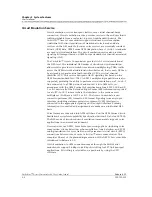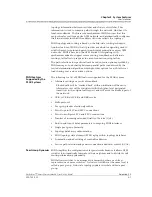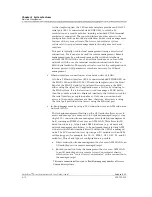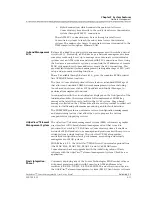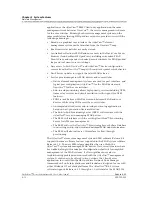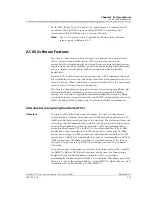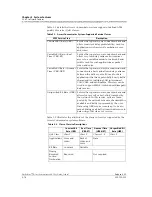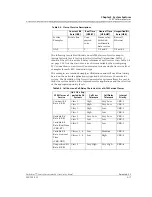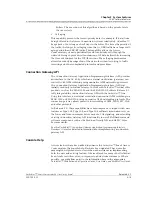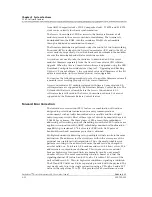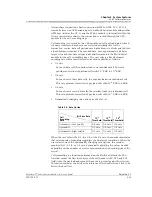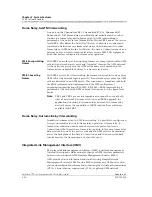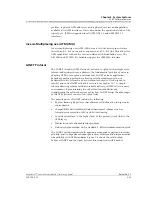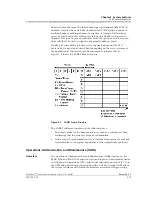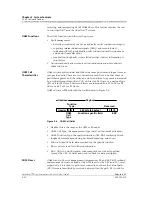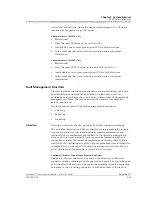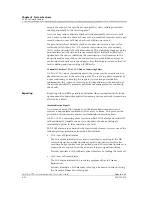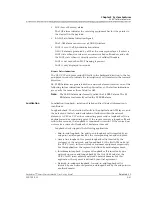
255-700-025
3-17
PacketStar
™
Access Concentrator 60 User Guide
, Issue 1
Release 6.3.0
Chapter 3 System Features
AC 60 Software Features
The following two tables illustrate how ATM classes of service map to
internal priority levels to structure the
AQueMan™
algorithm. Table 3-3
identifies the cell-loss and cell-delay tolerance of each service class. Table 3-4
on page 3-18 lists the class-of-service choices available when configuring
PVC connections on an Access Concentrator system and shows service level
examples for each PVC connection type.
The examples are intended simply as illustrations and will need fine tuning
based on the network applications supported by the Access Concentrator
system. The flexibility of the Access Concentrator systems allows the user to
tailor the system based on the required service applications and the selection
of the appropriate priority levels.
Service
Examples
Private line
Com-
pressed
voice
Frame relay,
Switched
multimedia
data service
Raw cell,
Ethernet
AAL
1
2
3/4 and 5
3/4 and 5
Table 3-3. Cell-Loss and Cell-Delay Characteristics of AT M Service Classes
ATM Classes of
Service
QoS Class Sup-
ported by AC
Systems
Cell Loss
Tolerance
Cell Delay
Tolerance
Internal
Priority
Constant Bit
Rate (CBR)
Class 1
High
Very Low
CBR-1
Class 1
High
Very Low
CBR-2
Class 1
High
Low
CBR-3
Class 1
High
Low
CBR-4
Variable Bit
Rate (VBR)
Variable Bit
Rate, Real Time
(VBR-RT)
Class 2
Very Low
Very Low
VBR-1
Class 2
Low
Low
VBR-2
Class 2
Low
Low
VBR-3
Variable Bit
Rate, Nonreal
Time
(VBR-NRT)
Classes 3, 4
Low
Medium
VBR-4
Classes 3, 4
Low
High
VBR-5
Unspecified Bit
Rate (UBR)
Class 5
Very High
Very High
VBR-6
Table 3-2. Class of Service Descriptions
Constant Bit
Rate (CBR)
Real Time
(VBR-RT)
Nonreal Time
(VBR-NRT)
Unspecified Bit
Rate (UBR)


